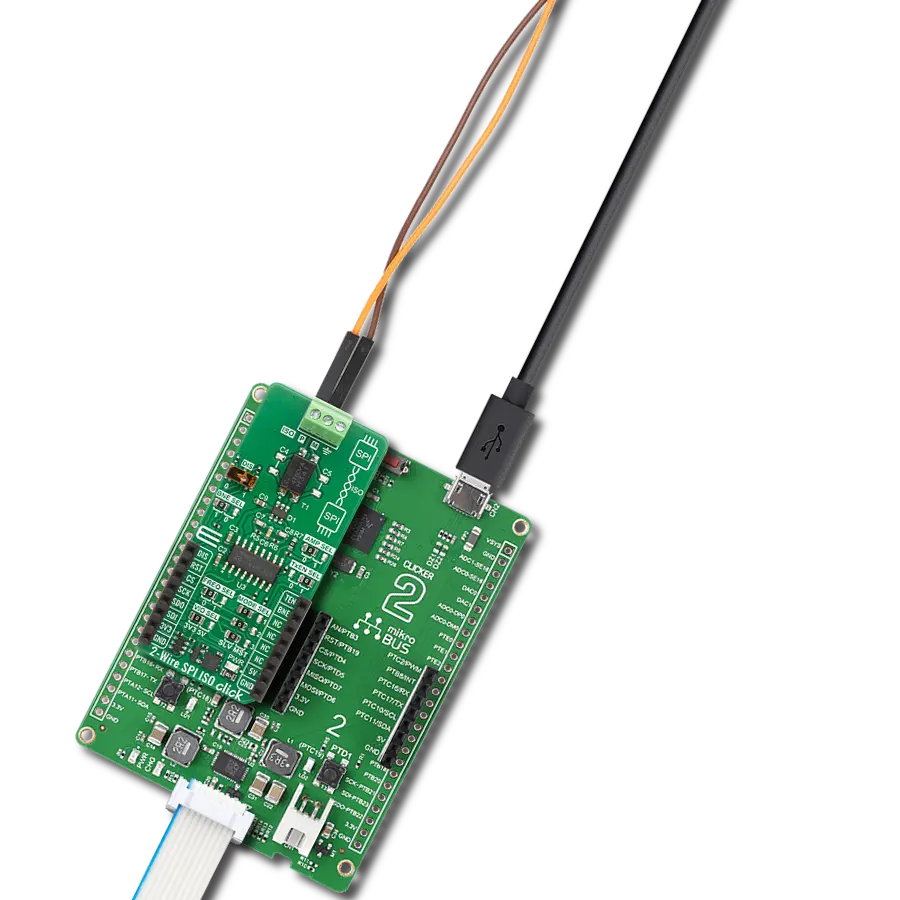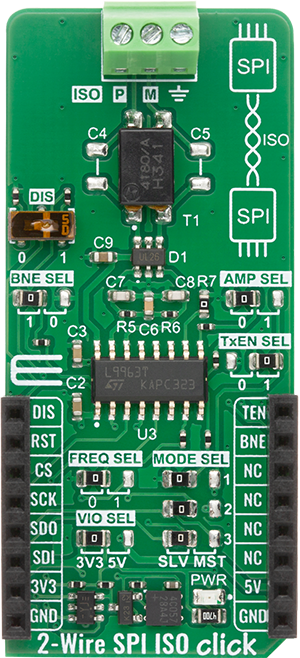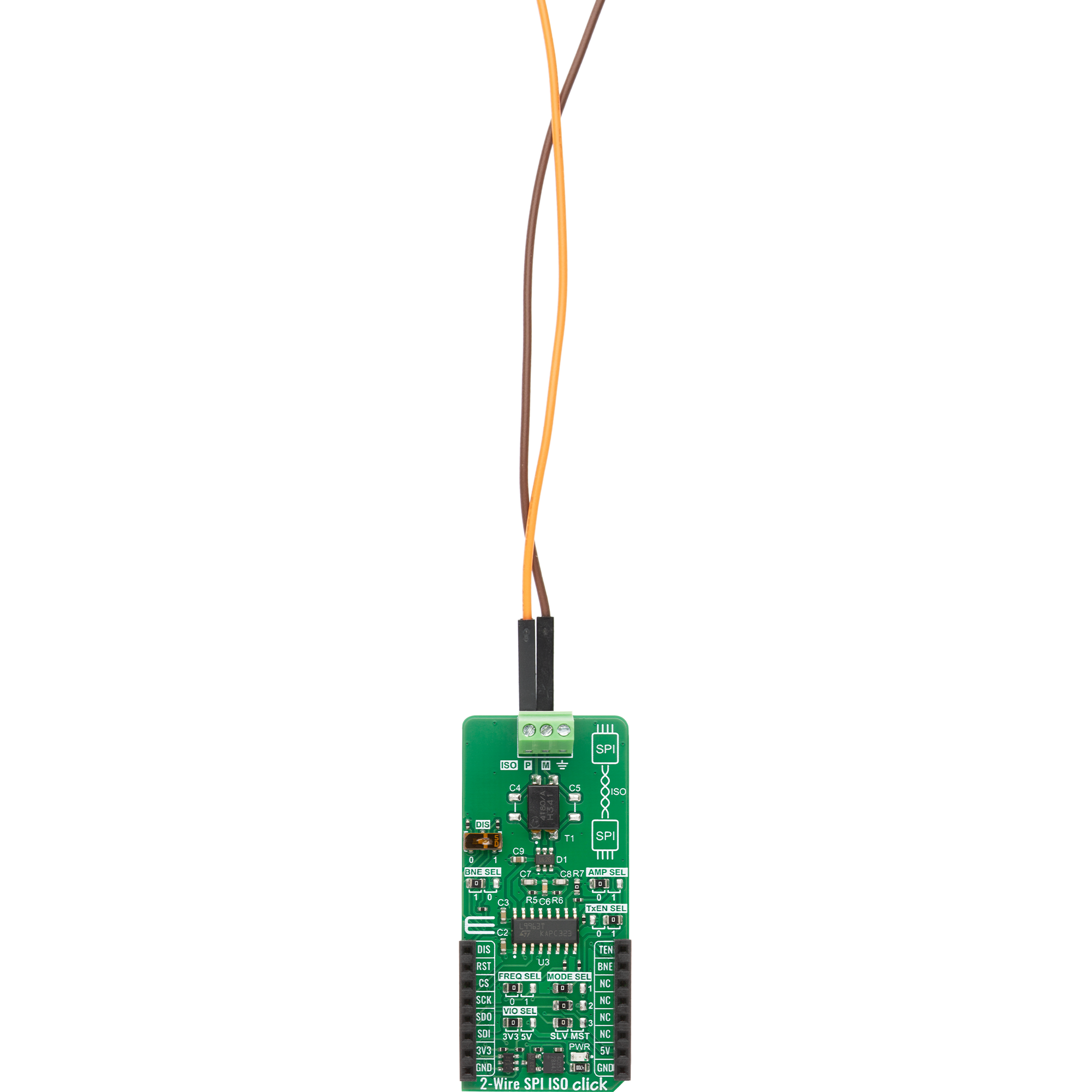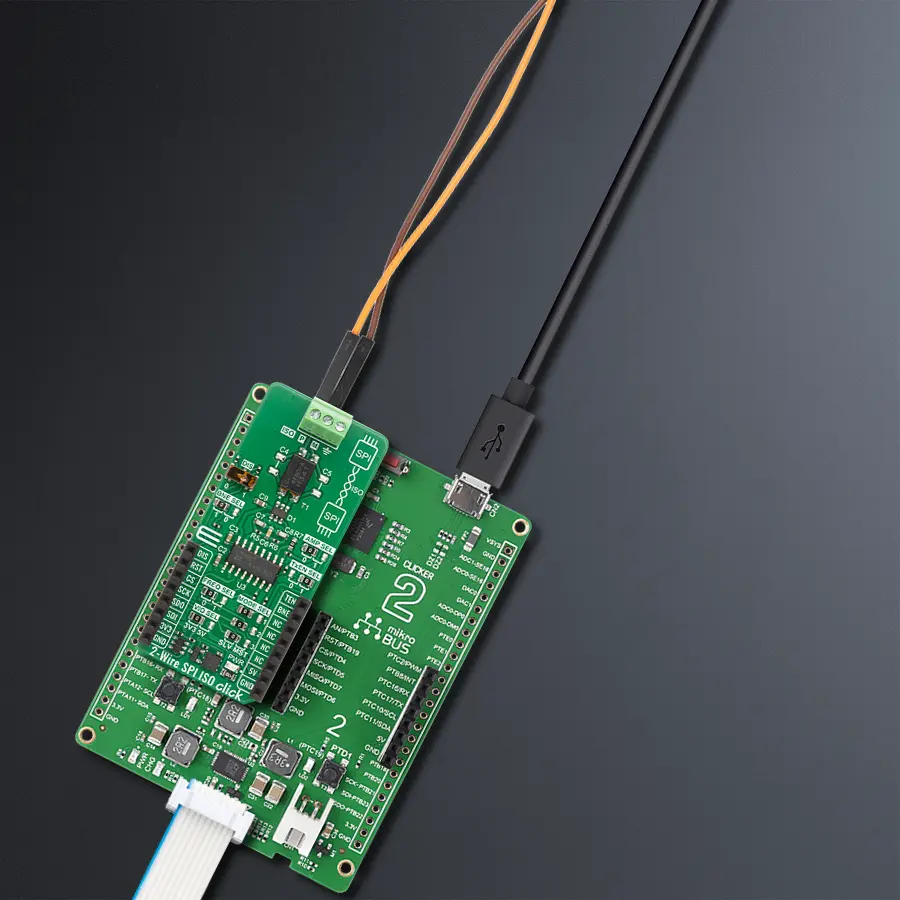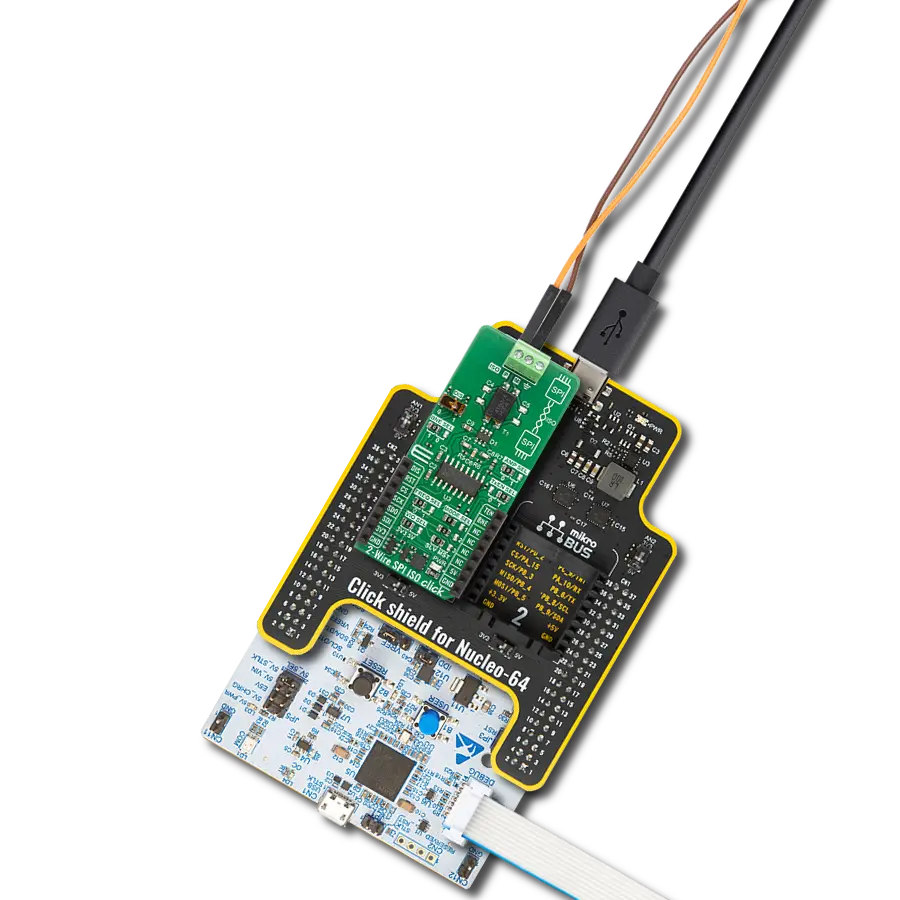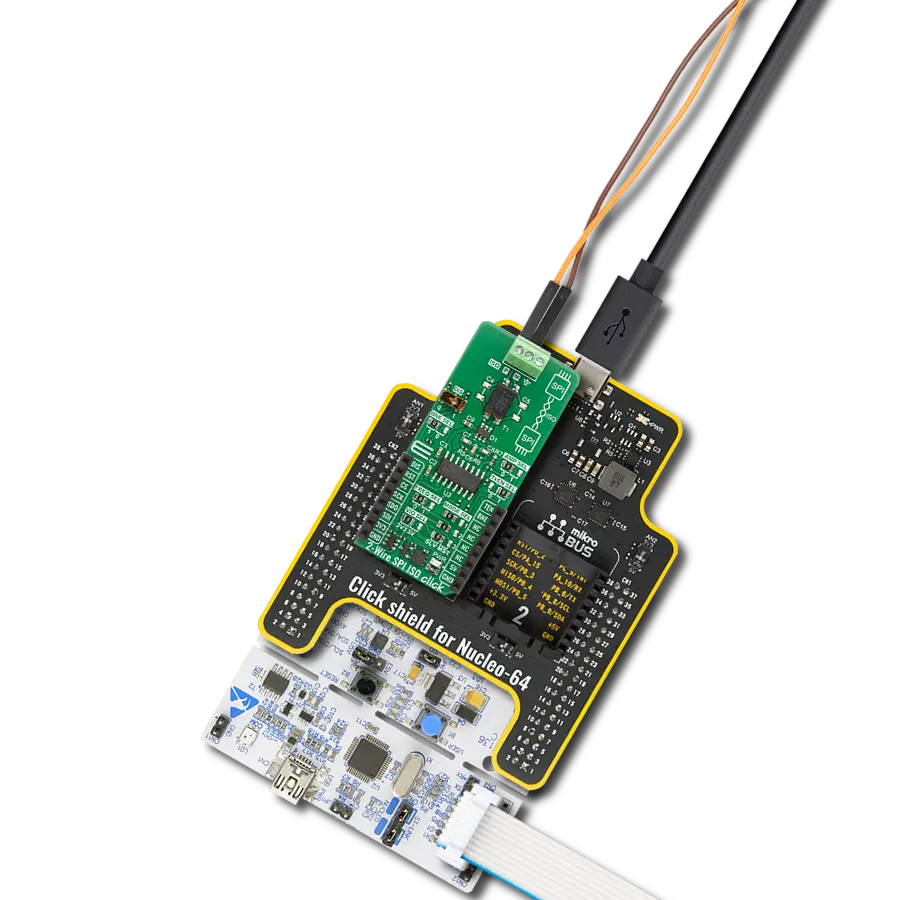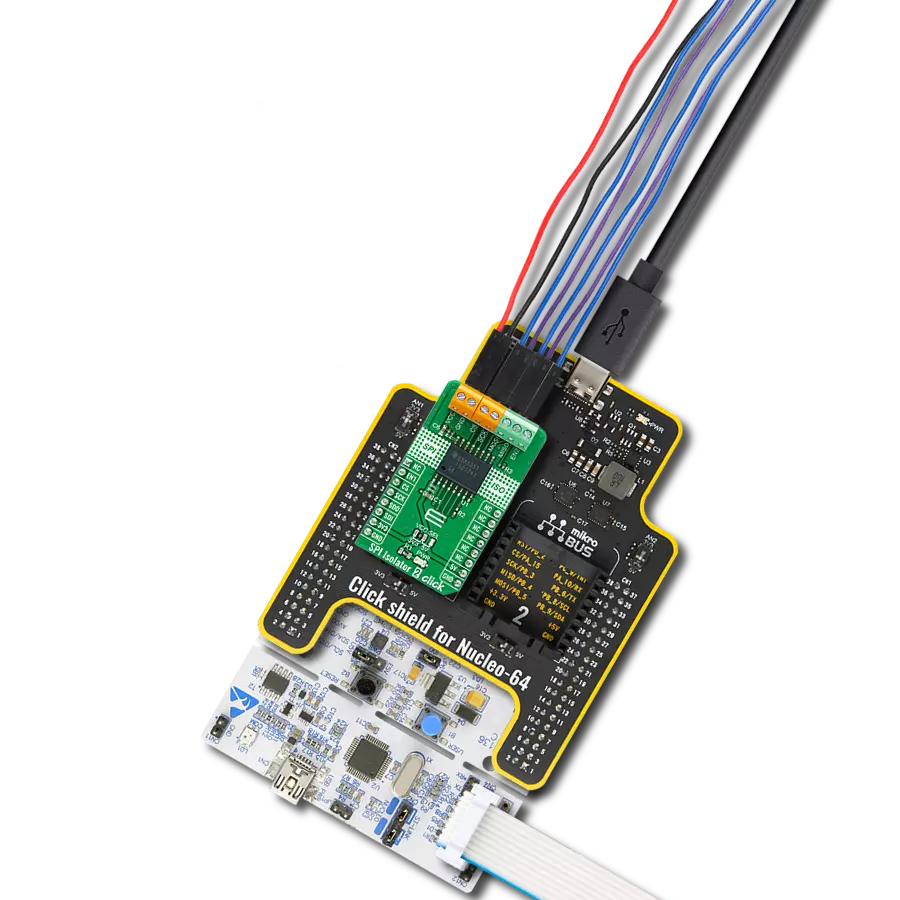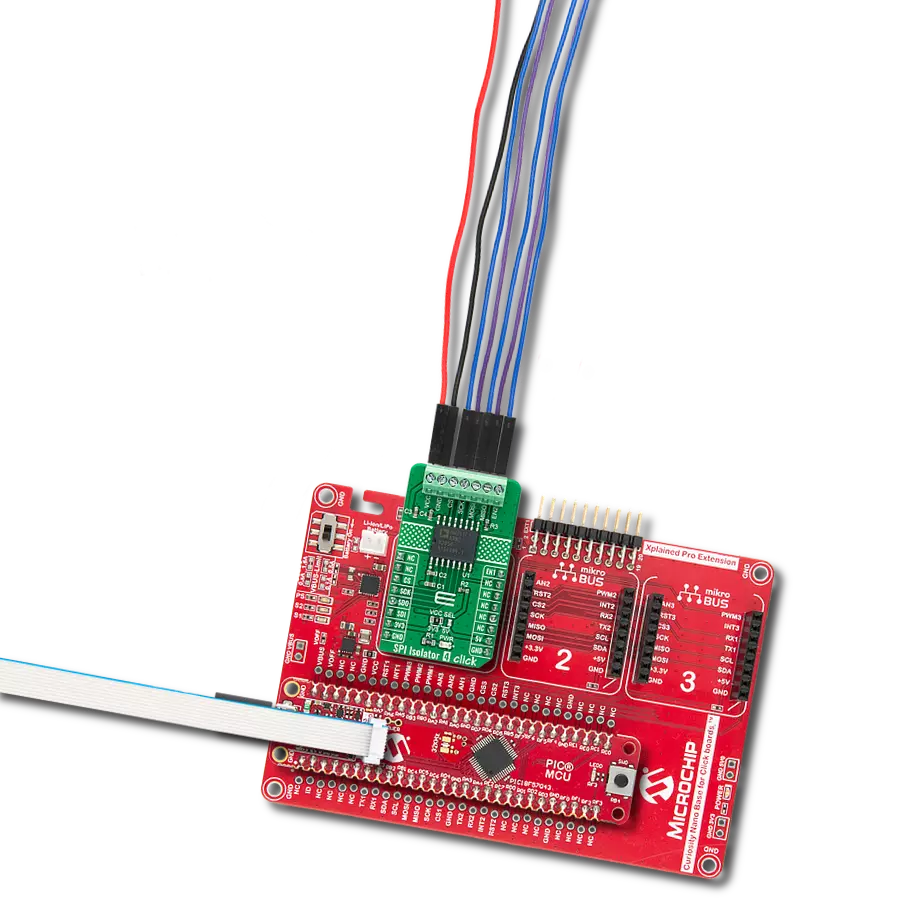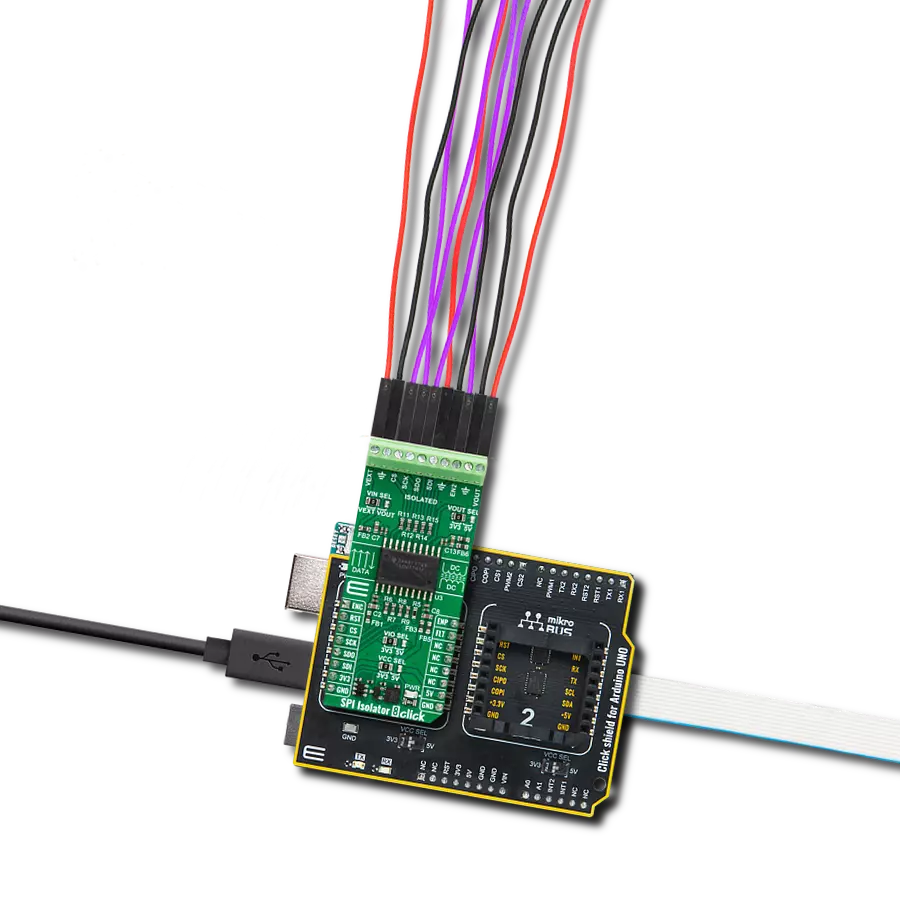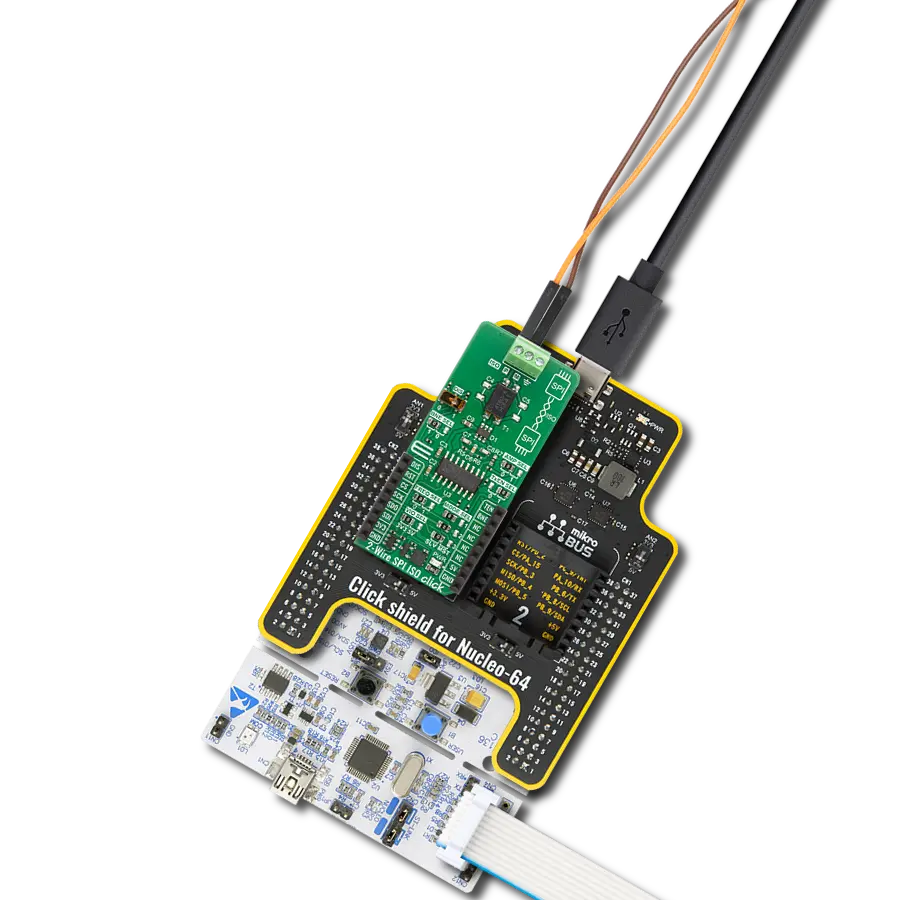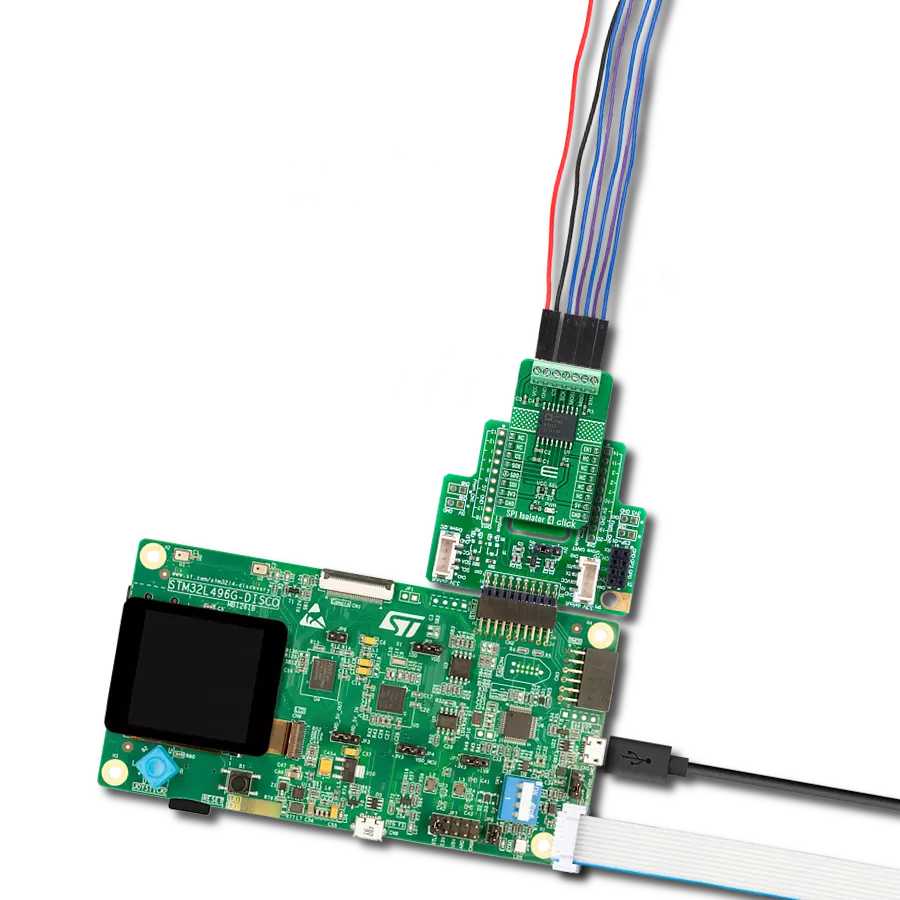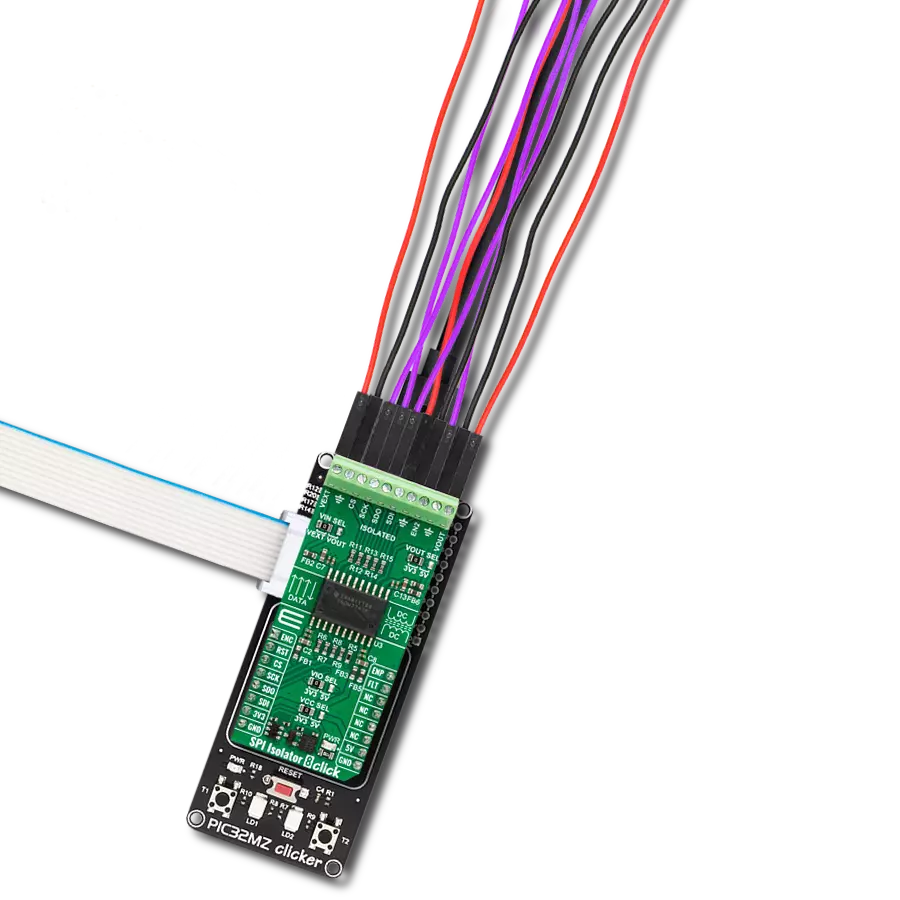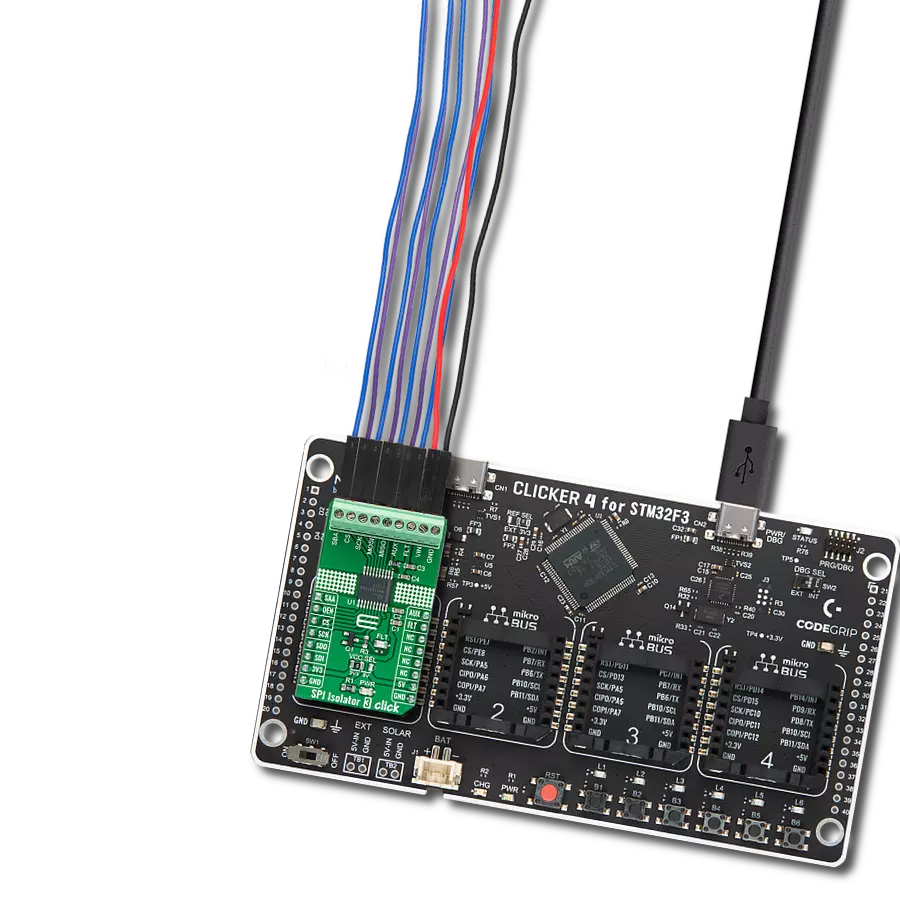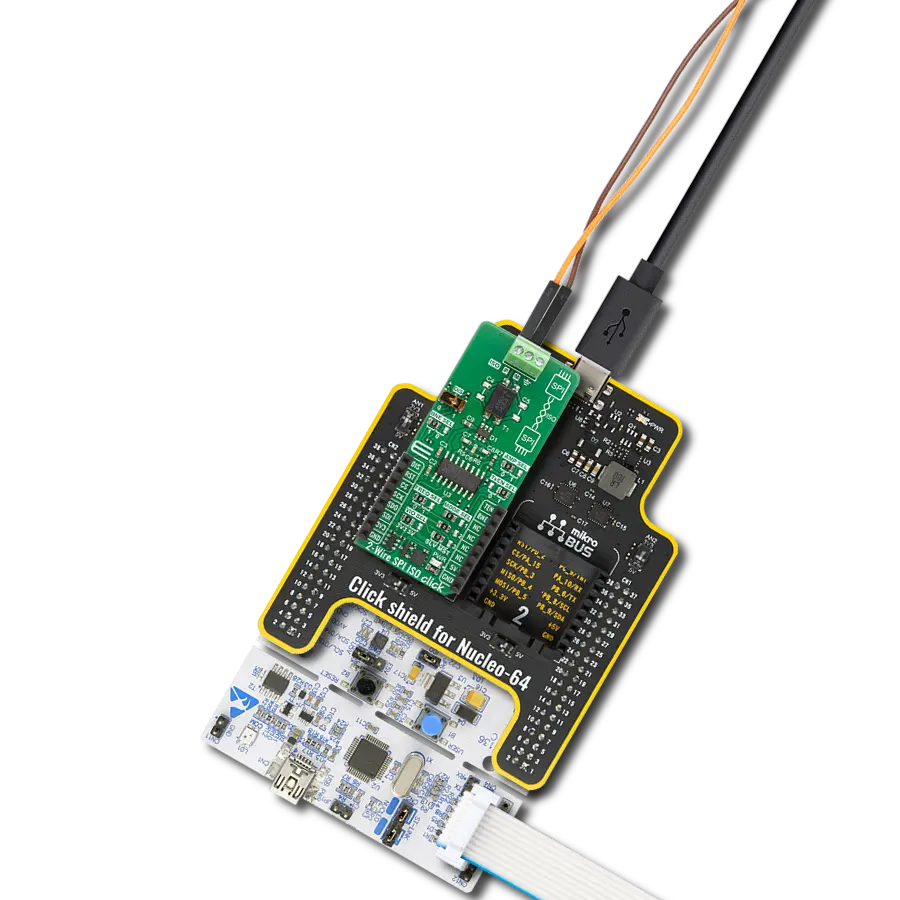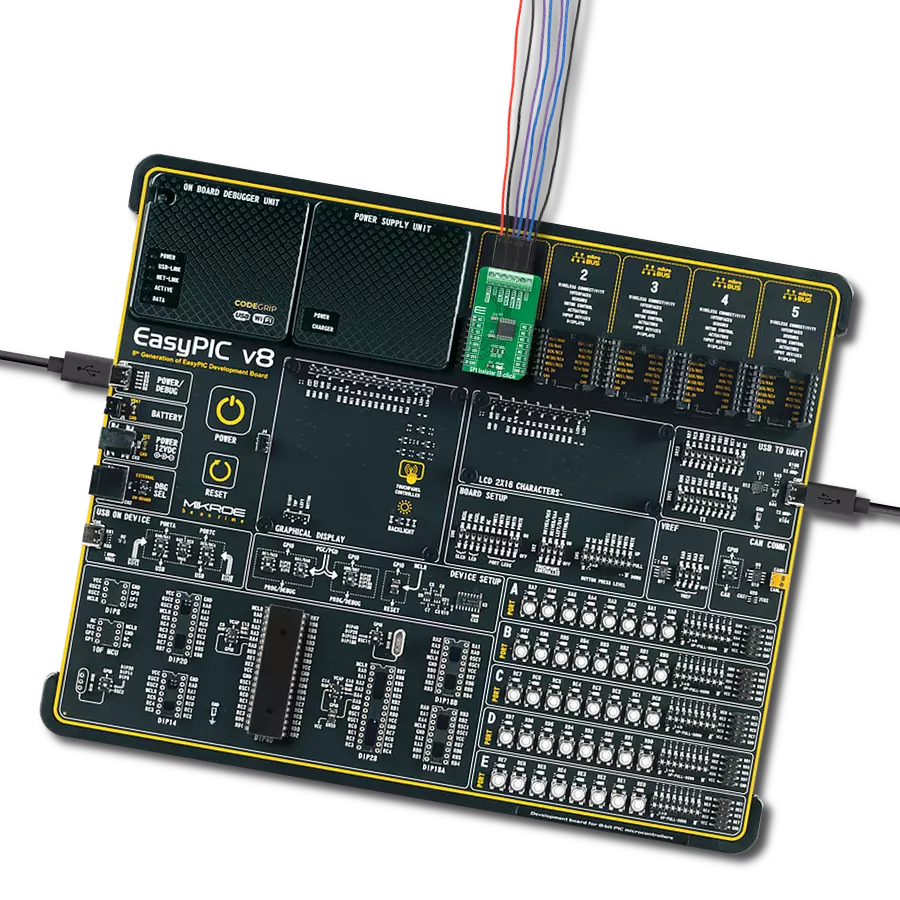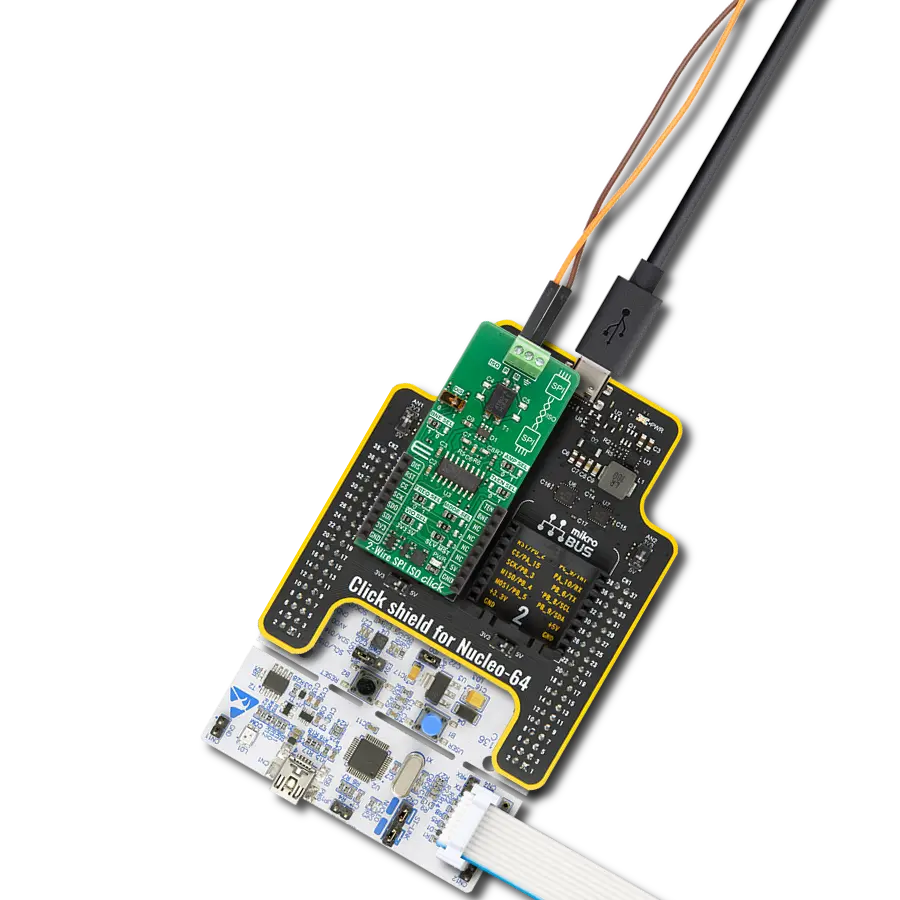Bridge standard SPI and isolated 2-wire SPI interfaces with configurable Host/Peripheral modes and robust signal integrity
A
A
Hardware Overview
How does it work?
2-Wire SPI ISO Click is based on the L9963T, an automotive general-purpose SPI to isolated SPI transceiver from STMicroelectronics that provides a galvanically isolated communication bridge between devices operating in different voltage domains. The L9963T is designed to transfer data from a classical 4-wire SPI interface to a proprietary 2-wire isolated interface and back, ensuring data exchange in environments where galvanic isolation is required. It supports both transformer and capacitive isolation, since the generated isolated signal is compatible with both decoupling technologies. This Click board™ is ideal for automotive 48V and high-voltage systems, backup energy storage and UPS applications, industrial communication networks, portable and semi-portable devices, and remote sensors, providing an isolated SPI communication link for demanding embedded applications. The L9963T can be configured either as a Slave or a Master
mode of the SPI bus by placing MODE SEL jumpers in the proper positions and supports any SPI frame length from 8 to 64 bits, transferring data transparently without performing protocol checks. In Slave mode, the SPI interface can operate at up to 10MHz, while in Master mode the clock frequency can be selected among 250kHz, 1MHz, 4MHz, or 8MHz. On the isolated SPI side, two operating modes are available: a low-speed mode at 333kbps and a high-speed mode at 2.66Mbps, selectable via the FREQ SEL jumper. The device internally manages the asynchronicity between both sides, enabling the use of all frequency configurations across the two SPI domains. To accommodate timing differences and ensure smooth data flow, the L9963T integrates a buffer with 3 slots for frames received on the SPI port and 20 slots for frames received on the isolated SPI port, decoupling the two clock domains. The board also features a DIS switch that allows the user to
disable the transmitter and place the device into a low-power mode when set to position 1, or keep it in normal operating mode when set to position 0. A set of jumpers provides additional flexibility: BNE SEL controls the SDO Buffer Not Empty flag and allows SPI clock polarity (CPOL) selection, AMP SEL selects the isolated SPI transmit amplitude and threshold between low and high, and TxEN SEL enables the transmitter or selects the SPI clock phase (CPHA). This Click board™ can operate with either 3.3V or 5V logic voltage levels selected via the VIO SEL jumper. This way, both 3.3V and 5V capable MCUs can use the communication lines properly. Also, this Click board™ comes equipped with a library containing easy-to-use functions and an example code that can be used as a reference for further development.
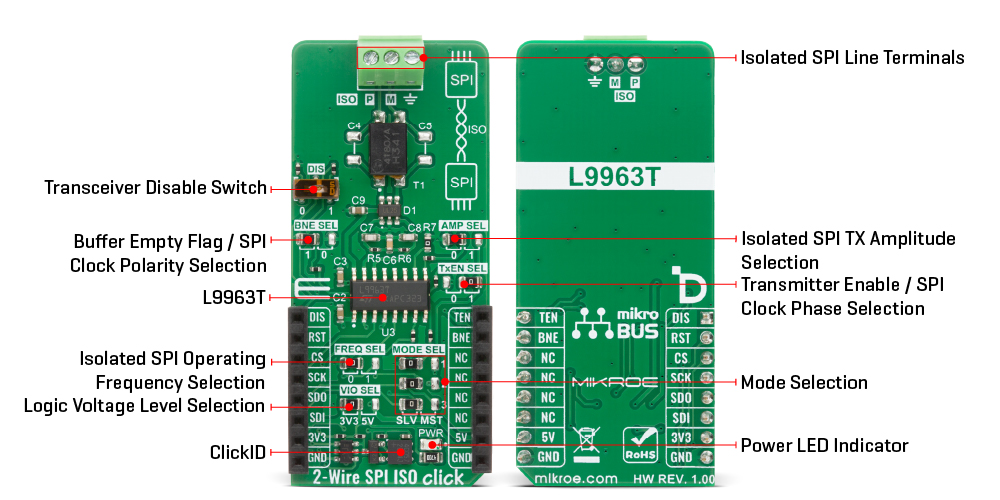
Features overview
Development board
Clicker 2 for Kinetis is a compact starter development board that brings the flexibility of add-on Click boards™ to your favorite microcontroller, making it a perfect starter kit for implementing your ideas. It comes with an onboard 32-bit ARM Cortex-M4F microcontroller, the MK64FN1M0VDC12 from NXP Semiconductors, two mikroBUS™ sockets for Click board™ connectivity, a USB connector, LED indicators, buttons, a JTAG programmer connector, and two 26-pin headers for interfacing with external electronics. Its compact design with clear and easily recognizable silkscreen markings allows you to build gadgets with unique functionalities and
features quickly. Each part of the Clicker 2 for Kinetis development kit contains the components necessary for the most efficient operation of the same board. In addition to the possibility of choosing the Clicker 2 for Kinetis programming method, using a USB HID mikroBootloader or an external mikroProg connector for Kinetis programmer, the Clicker 2 board also includes a clean and regulated power supply module for the development kit. It provides two ways of board-powering; through the USB Micro-B cable, where onboard voltage regulators provide the appropriate voltage levels to each component on the board, or
using a Li-Polymer battery via an onboard battery connector. All communication methods that mikroBUS™ itself supports are on this board, including the well-established mikroBUS™ socket, reset button, and several user-configurable buttons and LED indicators. Clicker 2 for Kinetis is an integral part of the Mikroe ecosystem, allowing you to create a new application in minutes. Natively supported by Mikroe software tools, it covers many aspects of prototyping thanks to a considerable number of different Click boards™ (over a thousand boards), the number of which is growing every day.
Microcontroller Overview
MCU Card / MCU
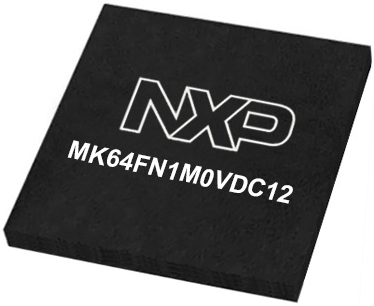
Architecture
ARM Cortex-M4
MCU Memory (KB)
1024
Silicon Vendor
NXP
Pin count
121
RAM (Bytes)
262144
Used MCU Pins
mikroBUS™ mapper
Take a closer look
Click board™ Schematic
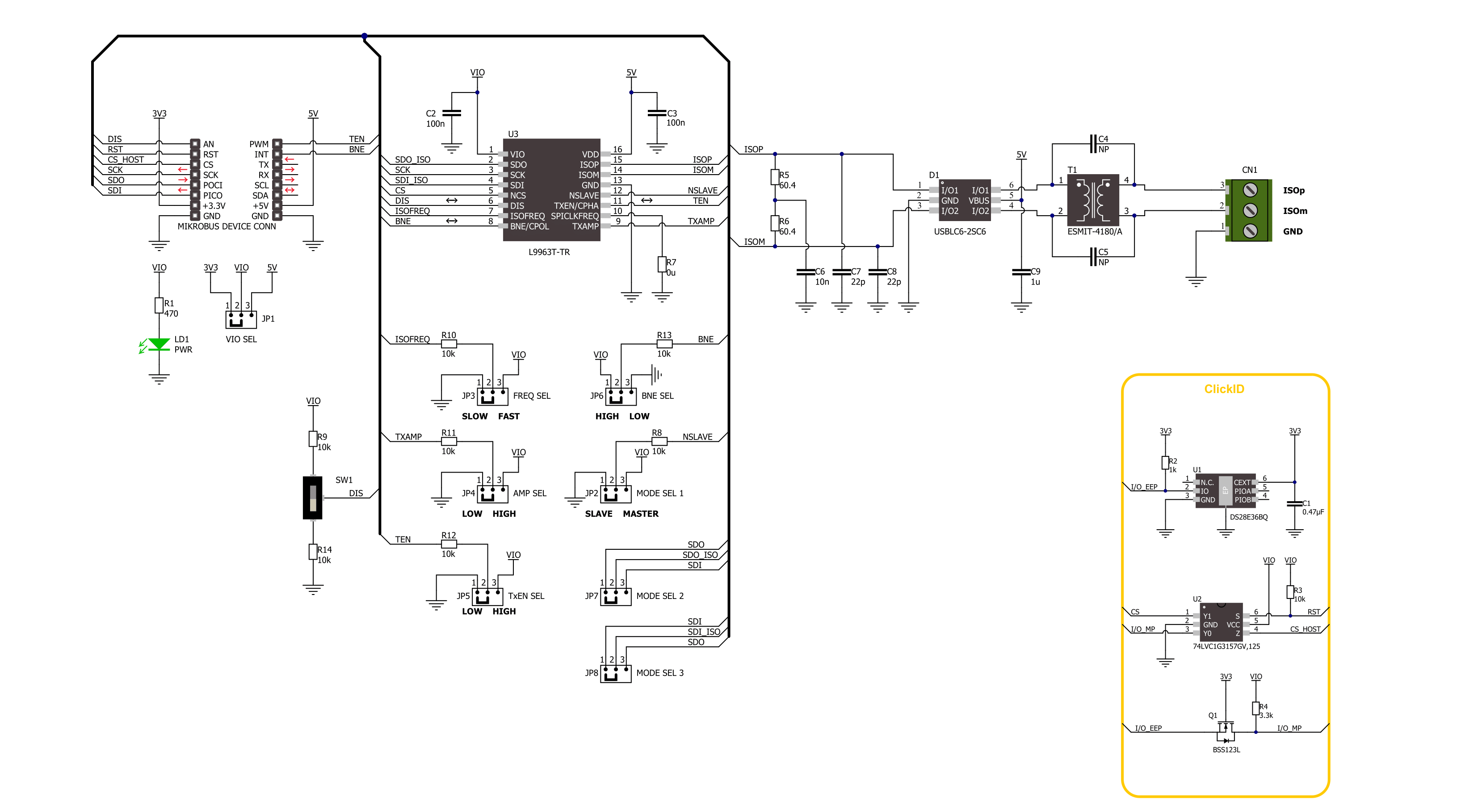
Step by step
Project assembly
Software Support
Library Description
2-Wire SPI ISO Click demo application is developed using the NECTO Studio, ensuring compatibility with mikroSDK's open-source libraries and tools. Designed for plug-and-play implementation and testing, the demo is fully compatible with all development, starter, and mikromedia boards featuring a mikroBUS™ socket.
Example Description
This example demonstrates the use of a 2-Wire SPI ISO Click board by showing the communication between the two Click boards (Slave and Master). That is performed by sending commands to a 2-Wire SPI ISO Click (Slave) to read the device ID of a Accel 22 Click board connected to the 2-Wire SPI ISO Click (Master).
Key functions:
c2wirespiiso_cfg_setup- Config Object Initialization function.c2wirespiiso_init- Initialization function.c2wirespiiso_default_cfg- Click Default Configuration function.c2wirespiiso_write- This function writes a desired number of data bytes by using SPI serial interface.c2wirespiiso_read- This function reads a desired number of data bytes by using SPI serial interface.c2wirespiiso_get_bne_pin- This function returns the RX buffer not empty (BNE) pin logic state.
Application Init
Initializes the driver and performs the Click default configuration.
Application Task
Reads and checks the device ID of a Accel 22 Click board connected to the 2-Wire SPI ISO (Master) Click, and displays the results on the USB UART approximately once per second.
Open Source
Code example
The complete application code and a ready-to-use project are available through the NECTO Studio Package Manager for direct installation in the NECTO Studio. The application code can also be found on the MIKROE GitHub account.
/*!
* @file main.c
* @brief 2-Wire SPI ISO Click example
*
* # Description
* This example demonstrates the use of a 2-Wire SPI ISO Click board by showing
* the communication between the two Click boards (Slave and Master). That is performed by
* sending commands to a 2-Wire SPI ISO Click (Slave) to read the device ID of a Accel 22
* Click board connected to the 2-Wire SPI ISO Click (Master).
*
* The demo application is composed of two sections :
*
* ## Application Init
* Initializes the driver and performs the Click default configuration.
*
* ## Application Task
* Reads and checks the device ID of a Accel 22 Click board connected to the 2-Wire SPI ISO
* (Master) Click, and displays the results on the USB UART approximately once per second.
*
* @note
* The communication topology is as follows:
* MCU <-> 2-Wire SPI ISO Click (Slave) <-> 2-Wire SPI ISO Click (Master) <-> Accel 22 Click
* The Master/Slave selection is done via on-board SMD jumpers.
* The Master Click board must be powered up with a 3V3 and 5V power supply externally.
* Also the DIS must be pulled down on Master Click board to enable the device.
*
* @author Stefan Filipovic
*
*/
#include "board.h"
#include "log.h"
#include "c2wirespiiso.h"
static c2wirespiiso_t c2wirespiiso;
static log_t logger;
/**
* @brief 2-Wire SPI ISO get Accel 22 ID function.
* @details This function reads and checks the device ID of the Accel 22 Click board which
* is connected to 2-Wire SPI ISO (master) Click board.
* @param[in] ctx : Click context object.
* See #spiisolator6_t object definition for detailed explanation.
* @return None.
* @note None.
*/
void c2wirespiiso_get_accel22_id ( c2wirespiiso_t *ctx );
void application_init ( void )
{
log_cfg_t log_cfg; /**< Logger config object. */
c2wirespiiso_cfg_t c2wirespiiso_cfg; /**< Click config object. */
/**
* Logger initialization.
* Default baud rate: 115200
* Default log level: LOG_LEVEL_DEBUG
* @note If USB_UART_RX and USB_UART_TX
* are defined as HAL_PIN_NC, you will
* need to define them manually for log to work.
* See @b LOG_MAP_USB_UART macro definition for detailed explanation.
*/
LOG_MAP_USB_UART( log_cfg );
log_init( &logger, &log_cfg );
log_info( &logger, " Application Init " );
// Click initialization.
c2wirespiiso_cfg_setup( &c2wirespiiso_cfg );
C2WIRESPIISO_MAP_MIKROBUS( c2wirespiiso_cfg, MIKROBUS_1 );
if ( SPI_MASTER_ERROR == c2wirespiiso_init( &c2wirespiiso, &c2wirespiiso_cfg ) )
{
log_error( &logger, " Communication init." );
for ( ; ; );
}
c2wirespiiso_default_cfg ( &c2wirespiiso );
log_info( &logger, " Application Task " );
}
void application_task ( void )
{
c2wirespiiso_get_accel22_id ( &c2wirespiiso );
Delay_ms ( 1000 );
}
int main ( void )
{
/* Do not remove this line or clock might not be set correctly. */
#ifdef PREINIT_SUPPORTED
preinit();
#endif
application_init( );
for ( ; ; )
{
application_task( );
}
return 0;
}
void c2wirespiiso_get_accel22_id ( c2wirespiiso_t *ctx )
{
#define TIMEOUT_MS 1000
#define DEVICE_NAME "Accel 22 Click"
#define DEVICE_SPI_READ_REG 0x0B
#define DEVICE_REG_ID 0x00
#define DEVICE_ID 0xAD
uint8_t data_buf[ 3 ] = { DEVICE_SPI_READ_REG, DEVICE_REG_ID, 0 };
uint16_t timeout_cnt = 0;
// Send SPI read reg command + reg address + 1 dummy byte as data request
c2wirespiiso_write ( ctx, data_buf, 3 );
// Wait for RX buffer not empty indication
while ( !c2wirespiiso_get_bne_pin ( ctx ) )
{
if ( ++timeout_cnt > TIMEOUT_MS )
{
log_error( &logger, "Timeout! Make sure the DIS pin is pulled down on master Click board." );
return;
}
Delay_1ms ( );
}
// Read 3 bytes, 2 dummy bytes + response data byte
c2wirespiiso_read ( ctx, data_buf, 3 );
log_printf( &logger, "\r\n %s\r\n", ( char * ) DEVICE_NAME );
if ( DEVICE_ID == data_buf[ 2 ] )
{
log_printf ( &logger, " Device ID: 0x%.2X\r\n", ( uint16_t ) data_buf[ 2 ] );
}
else
{
log_error( &logger, "Wrong ID read: 0x%.2X", ( uint16_t ) data_buf[ 2 ] );
}
}
// ------------------------------------------------------------------------ END
Additional Support
Resources
Category:SPI
